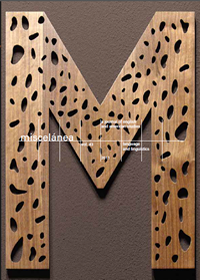Translating Images: The Impact of the Image on the Translation of Disney's Alice in Wonderland into Spanish
DOI:
https://doi.org/10.26754/ojs_misc/mj.20119282Palabras clave:
traducción audiovisual, Alicia en el país de las maravillas, semiótica y elementos visualesResumen
El objetivo de este artículo es analizar la versión doblada al español de la película de animación de Disney de 1951 Alicia en el País de las Maravillas, basada en gran parte en Alicia en el País de las Maravillas de Carroll y en algunos pasajes de A través del espejo. El trabajo analiza la relación entre los elementos visuales y verbales que se encuentran a lo largo de esta película. A través del análisis de algunos ejemplos tomados de la versión doblada al español de la película, este artículo muestra cómo lo visual se convierte en una cuestión crucial en la traducción de esta película, donde los elementos visuales se funden con el discurso verbal.
Descargas
Referencias
Baumgarten, N. 2008. “Yeah, that’s it!: verbal reference to visual information in film texts and film translations”. META 53, 1: 6-25.
Campos, H. 1967/1992. “Da Tradução como Criação e como Crítica”. Metalinguagem e Outras Metas: 31-48.
Chaume Varela, F. 2004a. Cine y traducción. Madrid: Cátedra col. Signo e Imagen.
—. 2004b. “Film studies and translation studies: two disciplines at stake in audiovisual translation”. META 49, 1: 12-24.
—. 2004c. “Synchronization in dubbing. A translation approach”. In Orero, P. (ed.) Topics in audiovisual translation. Amsterdam and Philadelphia: John Benjamins Publishing Company: 35-51.
Delabastita, D. 1989. “Translation and masscommunication: film and T.V. translation as evidence of cultural dynamics”. Babel 35, 4: 193-218.
—. 1996. The Translator. Studies in Intercultural Communication 2, 2, Special Issue: Wordplay & Translation. Manchester: St Jerome.
Fiske, R. 1990. Introduction to Communication Studies. London: Routledge.
Fodor, I. 1976. Phonetic, semiotic, esthetic and psychological aspects. Hamburg: Helmut Buske Verlag.
Hartley, J., T. O’sullivan, D. Saunders, M. Montgomery and J. Fiske. 1994. Key Concepts in Communication and Cultural Studies. Routledge.
Kress, G. and T. Van Leeuwen. 1996. Reading Images: The Grammar of Visual Design. London/New York: Routledge.
Lorenzo, L., A. Pereira and M. Xoubanova. 2003. “The Simpsons/Los Simpson. Analysis of an audiovisual translation”. The Translator 9, 2: 269-291.
Oittinen, R. 2003. “Where the wild things are”. META 48, 1-2: 128-141.
Peirce, C. 1931-1958. Collected papers. Cambridge, Mass.: Harvard University Press.
Saussure, F. 1983. Course in General Linguistics. Trans. R. Harris. London: Duckworth.
Toury, G. 1993. “Probabilistic Explanations in Translation Studies. Welcome as they are, would they qualify as universals?”. In Mauranen, A. and P. Kujamäki (eds). Translation Universals: Do They Exist?. Amsterdam: John Benjamins: 15-32.
Yerkes, D. (ed.). 1996. Webster’s encyclopedic unabridged dictionary of the English language. New York/Avenel: Gramercy Books.
Yaguello, M and T. A. Harris. 1998. Language through the looking glass: exploring language and linguistics. Oxford: OUP.
Zabalbeascoa, P. 2003. “Translating Audiovisual Screen Irony”. In Pérez, L. (ed.). Speaking in Tongues: Languages Across Contexts and Users. Valencia: PUV: 305-322.
Descargas
Publicado
Número
Sección
Licencia
Derechos de autor 2012 M.ª Pilar González Vera

Esta obra está bajo una licencia internacional Creative Commons Atribución-NoComercial 4.0.


